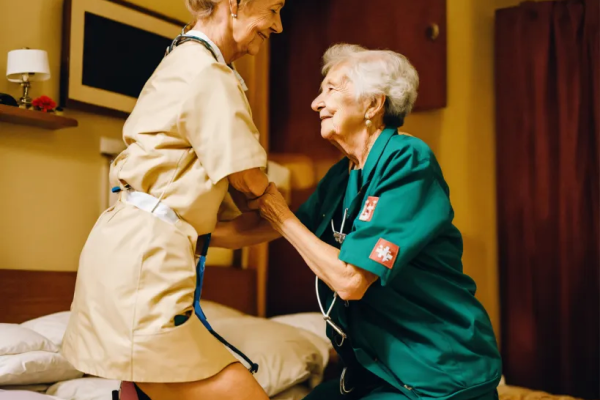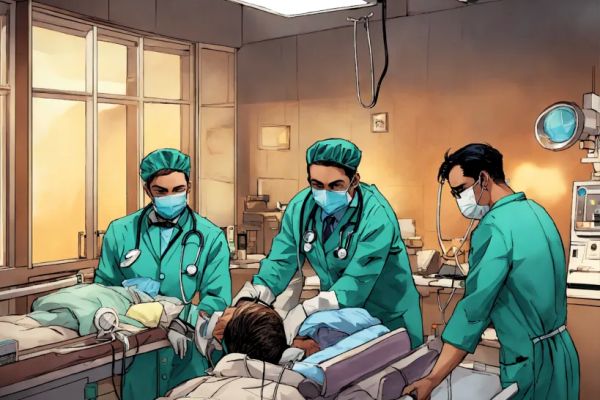
Workplace injuries and illnesses can have devastating impacts on workers, their families, and companies. However, many of these incidents are preventable through proper safety policies, procedures, and practices. Implementing an effective safety program is crucial for protecting employee wellbeing and ensuring business continuity.
Importance of Safety in the Workplace
Maintaining a safe working environment should be a top priority for any business. Beyond the clear ethical imperative to prevent harm, workplace accidents also carry major financial consequences. The National Safety Council estimates that injuries cost employers over $170 billion per year in medical expenses, lost wages, and productivity impacts. Serious incidents can also spark lawsuits, reputational damage, or regulatory fines.
Prioritizing safety simply makes good business sense as well. Studies show that companies with strong safety cultures experience higher employee satisfaction, better talent retention, increased efficiency, and lower operational costs over the long run. For example, reducing recordable incidents by just 1% company-wide can translate into over $350,000 in savings for a 10,000 person organization.
Elements of an Effective Safety Program
Constructing an organizational culture centered on safety is no small undertaking. Successful programs require buy-in and participation from all levels to create meaningful impact. While specific components will vary by industry and individual worksite, most comprehensive safety plans contain the following core elements:
Leadership Commitment
Gaining leadership endorsement helps legitimize safety initiatives and allocates necessary resources. Senior management can demonstrate commitment through visibly championing safety, participating in training programs, enforcing accountability standards, and disseminating safety communications company-wide. Assigning oversight responsibilities to directors and managers also helps institutionalize practices.
Hazard Assessments
Thorough hazard assessments analyze work environments to pinpoint foreseeable risks that could cause harm. Assessments should identify both physical and health hazards, evaluating factors likeexposure to dangerous machinery, noise, chemicals, ergonomics issues, weather conditions, and more. Conducting routine self-inspections, job hazard analyses, and reviewing safety data helps reveal problem areas needing improvement.
Standard Operating Procedures
Documenting formal standard operating procedures (SOPs) ensures clarity for safely executing hazardous tasks. Well-designed SOPs outline step-by-step instructions, specify proper tools and PPE, highlight potential risks, and include emergency response measures. Common high-risk activities like confined space entry, equipment lockout/tagout, handling toxic materials, and hot work with open flame often warrant detailed protocols.
Effective Training
Ongoing safety education gives employees knowledge to protect themselves and properly use equipment. Training should cover situational awareness, hazard identification, risk mitigation strategies, proper tool handling techniques, PPE use, and more. Tailoring programs to different roles maximizes relevance. Combining traditional classroom teaching with hands-on demonstrations and field mentoring helps boost comprehension and retention rates.
Protective Equipment
Providing necessary protective equipment reduces exposure to common industrial hazards. Hard hats, ear plugs, safety glasses, respirators, protective clothing, fall protection, and other gear create barriers against injury. Ensuring quality maintenance and replacing damaged items prevents equipment failure. Policies for mandatory PPE use in designated areas guarantees adoption.
Inspection & Preventative Maintenance
While performing repairs when issues arise seems logically correct, sweating the small stuff before problems balloon can pay major dividends. Regular inspection and scheduled maintenance on equipment, vehicles, tools, rigging, ladders, fire protection systems, eyewash stations, and other assets extends item lifespans and keeps functionality optimal. This preventative approach increases safety by fixing minor deficiencies before they trigger major failures.
Emergency Preparedness
Despite best efforts, accidents sometimes still occur. Preparedness limits damages when the unthinkable happens. Well-practiced emergency action plans that cover evacuation routes, headcounts, means for summoning help, accounting for personnel, securing worksites, and continuing operations can save lives during crises. Positioning adequate first aid supplies, establishing rally points, and coordinating rehearsals induces readiness.
Safety Committee
In larger organizations, safety committees with representatives from management, supervisors, and workers can provide helpful guidance. Common responsibilities include assisting with program development, facilitating training initiatives, championing a strong safety culture, evaluating workplace conditions, reviewing procedures, investigating incidents, and recommending system enhancements.
Joint labor-management safety committees with equal representation build trust and give workers direct voice into decision-making. Committees model open communication channels between frontline employees and leadership. Granting some autonomy for conducting workplace inspections and leading their own initiatives also elicits greater participation.
Risk Assessments & Job Safety Analysis
Conducting job safety analysis (JSA) is another useful tactic for revealing hazards associated with specific work assignments. JSAs systematically break high-risk roles down into individual steps, assessing potential accidents and injury mechanisms tied to each discrete task. For example, a JSA on welding may identify risks like burns, electric shock, welding fumes, or falling objects during prepwork, actual welding, equipment moves, cleanup, etc.
JSAs shine light on aspects needing attention like enhancing precautions, upgrading tools, adjusting techniques, or improving workstation design. Findings can feed into SOP development, training enhancements, and preventative controls like installing machine guarding. Reviewing JSAs with workers directly performing the role also adds valuable reality checks.
Safety Incentive Programs
Rewarding safe behaviors cultivates engagement, boosts motivation, and makes safety feel less imposed. Common incentive programs issue cash bonuses or gift cards for individuals and groups hitting certain benchmarks like consecutive months/years without recordable incidents. Random prize drawings for PPE compliance offer smaller tokens of appreciation.
Consider tying some rewards to leading indicators like conducting safety observations or submitting hazard reports rather than purely lagging indicators like recordable rates. This prevents perverse incentives to hide minor incidents and emphasizes driving cultural change. Structured correctly, incentives encourage the intrinsic desire to work safely versus simply chasing prizes.
The IMPORTANCE of Near-Miss Reporting
Tracking and investigating near-miss events delivers crucial safety insights. Though near-misses cause no immediate damages, they signal areas where future incidents could likely transpire under slightly different circumstances. Each represents an opportunity to implement preventative measures and stop issues before they escalate.
Facilitating confidential near-miss reporting without fear of blame incentivizes transparency about the true state of safety. Analyzing circumstances surrounding near-misses can reveal if similar precursor trends also exist elsewhere or if systematic gaps are causing widespread issues. Findings lead to impactful risk control improvements.
The Role of Safety Observations
Safety observation programs leverage peer-to-peer interactions to influence behaviors and reinforce positive habits. Workers trained in observation techniques proactively engage co-workers in short coaching sessions focused on recognizing good practices and discussing potential precautions related to existing job hazards.
These quick positive interactions avoid disciplinary undertones, instead fostering open dialogue about safety. Conducting frequent observations also gives supervisors valuable touchpoints with frontline teams. Data can indicate where additional mentoring or procedural enhancements may help as well.
Safety Suggestion Programs
Seeking direct input from staff on safety ideas can yield creative solutions. An easy avenue is creating an anonymous electronic submission box for recommended system enhancements. Following up promptly on viable ideas, thanking contributors, and sharing improvements made demonstrates responsive management commitment.
Workplace Wellness Initiatives
Broad wellness programs addressing physical/mental health, proper nutrition, smoking cessation, weight control, stress relief, and work-life balance all help mitigate accident risk. Various formats like health risk assessments, biometric screenings, fitness challenges, ergonomic assessments, flu shot clinics, mental health training, healthy food offerings, and stress management workshops all positively impact wellbeing.
OSHA Regulations & Compliance
Complying with all relevant OSHA regulatory standards forms the foundation of safety programs. OSHA helps enforce safe baseline working conditions like required machine guarding, confined space protocols, hazardous chemical handling procedures, emergency egress, electrical safety, fall protection, and proper PPE use.
Staying current on emerging and updated standards through OSHA’s website, compliance assistance workshops, or partnering with consultants helps manage legal obligations. Voluntarily adopting more comprehensive consensus standards beyond basic compliance further controls risks.
Incident Management & Investigation
Responding swiftly and consistently after safety incidents occurs is imperative. Written emergency plans should designate response teams, establish protocols for summoning help, secure accident scenes, and prevent further escalation. Plans should cover responsibilities like administering first aid, evacuating personnel, coordinating with first responders, accounting for those involved, and communicating with stakeholders.
Conducting structured incident investigations afterwards determines causational root causes like unanticipated hazards, inadequate safeguards, non-compliance with existing rules, or need to enhance procedures. Detailed analysis guides impactful corrective actions for preventing recurrence. Lessons learned should inform continuous safety program improvements organization-wide.
Safety Metrics & Continuous Improvement
Metrics like Total Recordable Injury Rates (TRIR), Days Away/Restricted or Job Transfer (DART), first aid cases, near miss frequency rates, and Workers’ Compensation Experience Modifiers provide standardized benchmarks for monitoring program effectiveness and directing resources towards opportunities. Positive trends demonstrate returns on prevention efforts. Outliers suggest areas needing reinforcement.
Tying senior leader performance evaluations and bonuses to safety metrics further signifies organizational priorities. Purely relying on lagging indicators like injury rates alone may incentivize underreporting however, so balance both leading and lagging measures in assessment criteria.
While an exhaustive list covers numerous aspects, focusing too heavily on programs over culture can treat symptoms without curing root causes. Regular safety perception surveys, participation in suggestion programs, observation data, and near miss reporting rates reveal the true effectiveness of messaging and risk reduction strategies. Use multiple data streams to make informed, ever-evolving decisions that create meaningful improvements in safety outcomes over the long term.
Individual Responsibility
While leadership sets the tone for safety culture and provides necessary infrastructure, realizing envisioned gains requires diligence from every individual. A single lapse in judgment can have devastating consequences despite extensive organizational safeguards in place. Workers must take personal accountability for working safely, adhering to established protocols, wearing PPE properly, reporting concerns, and watching out for themselves and others.
A collaborative effort where both management and staff collectively take ownership for safety while looking out for one another as family generates the strongest results. With shared vision and unified action, organizations can accomplish incredible safety improvements that protect invaluable human lives.




